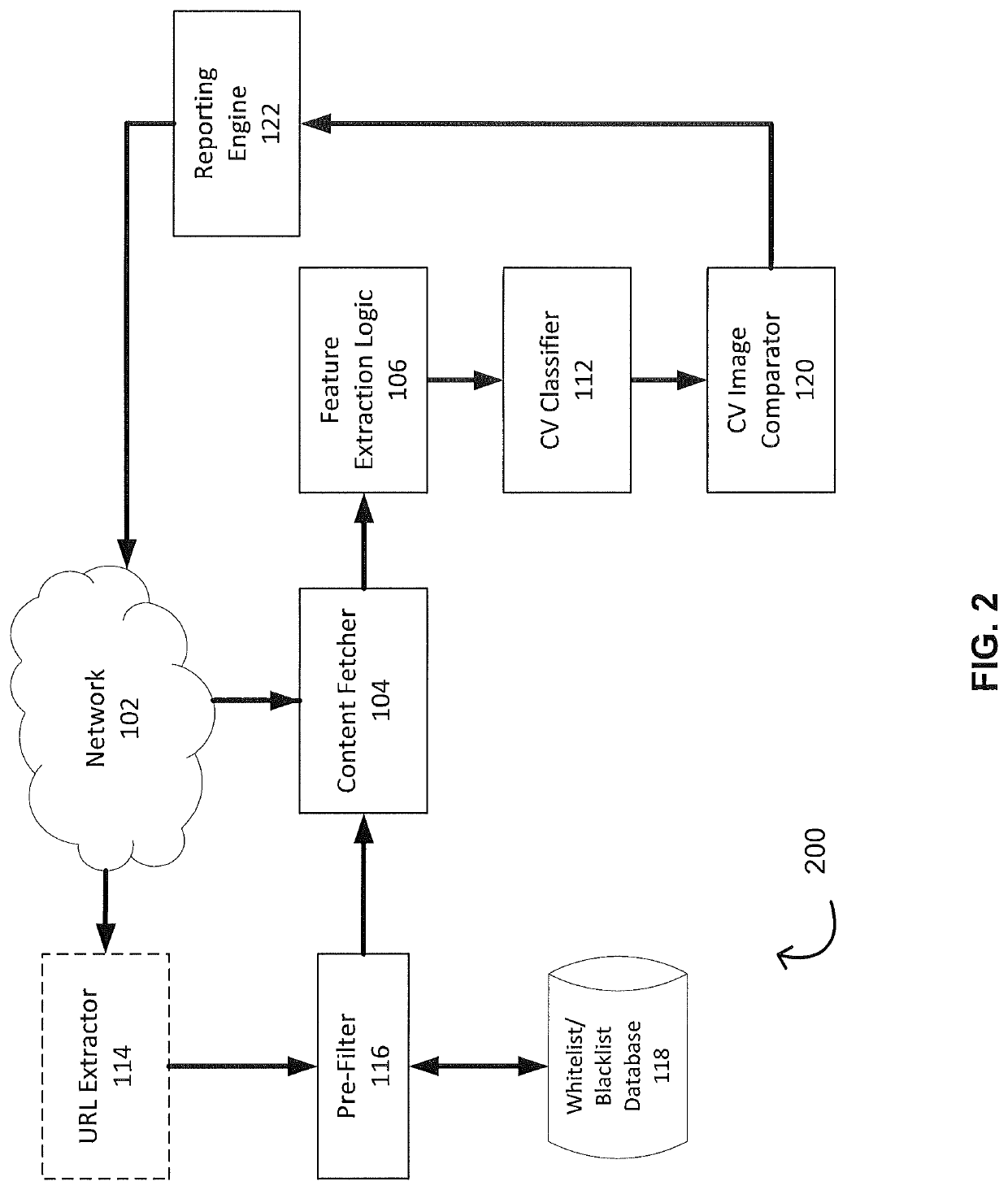Phishing attack detection
a phishing attack and detection technology, applied in the cyber security field, can solve the problems of plurality of drawbacks in the solution, failure to detect phishing attacks, and growing problems on the internet phishing is a growing problem,
- Summary
- Abstract
- Description
- Claims
- Application Information
AI Technical Summary
Benefits of technology
Problems solved by technology
Method used
Image
Examples
Embodiment Construction
[0010]I. Overview Summary
[0011]Embodiments of systems and methods for detecting phishing attacks are described. The phishing, detection and analysis system (PDAS) is configured to detect a phishing attack through the use of computer vision techniques that leverage a graphic representation (i.e., the representation expressing the “look and feel”) of a webpage to determine whether the webpage is attempting to mimic a legitimate webpage. Some specific embodiments attempt to determine whether a webpage is attempting to mimic a webpage through which a user enters sensitive information, such as login credentials, for purposes of stealing such sensitive information.
[0012]As a general overview, the PDAS described herein includes (i) a training process and (ii) a detection process. The training process generates a machine learning model (“model”), the model including a set of correlation rules, that is used in the detection process. The detection process receives a URL and analyzes the URL b...
PUM
 Login to View More
Login to View More Abstract
Description
Claims
Application Information
 Login to View More
Login to View More - R&D
- Intellectual Property
- Life Sciences
- Materials
- Tech Scout
- Unparalleled Data Quality
- Higher Quality Content
- 60% Fewer Hallucinations
Browse by: Latest US Patents, China's latest patents, Technical Efficacy Thesaurus, Application Domain, Technology Topic, Popular Technical Reports.
© 2025 PatSnap. All rights reserved.Legal|Privacy policy|Modern Slavery Act Transparency Statement|Sitemap|About US| Contact US: help@patsnap.com



